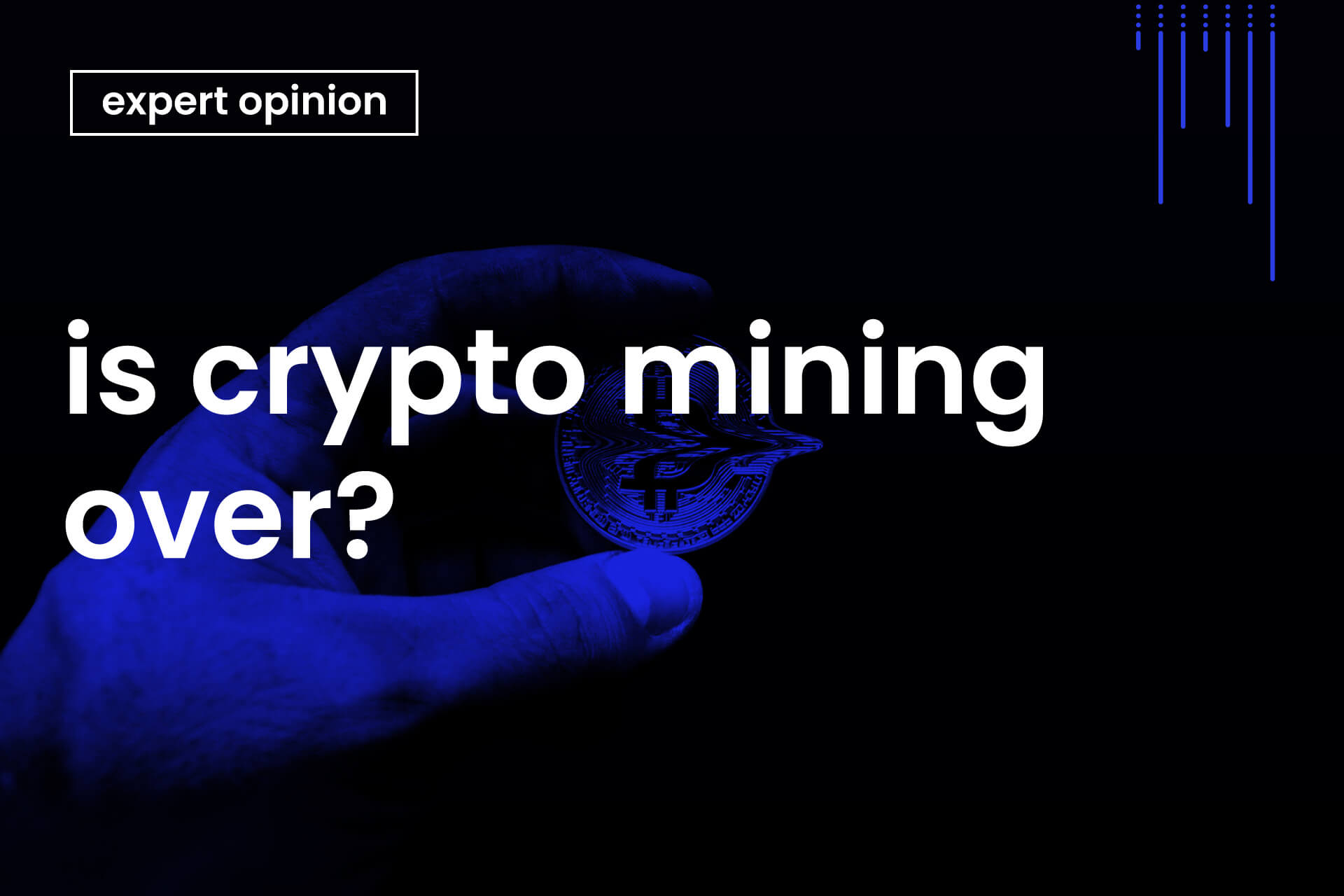
The last several years have seen a lot of changes in the crypto industry. In 2016 the prices were low, Bitcoin was barely around $1000 per coin, and the crypto trend was still pretty much unknown, in the shadows and undeserving of any greater attention.
Then in 2017, the prices surged, attracting traders, miners, as well as the attention of countries, banks, institutions, and individuals around the world. In 2018 the bear market brought the prices down, which caused many to flee the space in fear of losses. Eventually, the year-long crypto winter ended, and prices once again started recovering in early 2019. During all of that, one question kept emerging again and again – is cryptocurrency mining still profitable, or is it finally over?
Why are crypto miners important?
Ever since the creation of Bitcoin (as well as the first altcoins that followed) mining has been one of the crucial processes of the crypto and blockchain industries. Mining is responsible for two things in the crypto industry:
- Releasing new coins into the circulation
- “Solving” blocks and verifying transactions
As such, you might say that mining is the process that runs the industry, at least when it comes to those coins that do not have their total supply already mined. Miners are also the members of the crypto community that allow cryptocurrencies such as Bitcoin to remain truly decentralized, and not have to depend on a centralized institution, such as banks, agencies or governments.
Finally, miners allow blockchain to remain safe, as taking control of the network would require hacking more than half of the existing blockchain solvers, which ensure that all of the stored information remains immutable.
As you can see, cryptocurrency mining is extremely important for the crypto space, and so are miners, who allow the process to continue.
How much does it cost to start cryptocurrency mining?
The cost of mining depends on multiple factors, including the quality of the mining rig, the cost of electricity in the operating area, the mining difficulty, and more.
Of course, the price of the mined coin also plays a large role, as mining profitability determines whether a miner will remain a part of the network. With that in mind, cryptocurrency mining was usually profitable during most part of Bitcoin’s existence. In the early days, mining was not too expensive, as the mining difficulty was low due to the lack of miners.
Sponsored
Anyone could have started mining with their GPU. Over time, however, more expensive equipment became necessary, as more people started joining in, which increased the difficulty. However, BTC prices kept growing as well due to increased interest, so mining was still quite profitable, even though the price of equipment started growing, as well as the quantity of necessary resources, such as electricity.
When the crypto market crashed in 2018, the difficulty dropped somewhat, as many miners left the industry due to lower prices. Buying and using the mining gear still remained quite expensive, and the prices were down, which is why a lot of miners found that they are actually experiencing losses.
However, in 2019 the prices started growing again, and profitability surges as well. According to some reports, the price of cryptocurrency mining in mid-2019 sat at around $7,300, provided that miners used some older rigs, while the price of BTC was approximately $10,000. In other words, miners could have made a profit while using older and less expensive equipment.
At the time of writing, the BTC price is even lower than that, sitting slightly around $8,000. However, if the miners use S9, at $0.06/kWh, it is still profitable to mine BTC.
The situation is likely worse when it comes to altcoins, many of which have returned to the lows they saw at the beginning of 2019. Of course, this does not include every altcoin out there, so picking the right coin also plays a large role in mining profitability, which in turn affects the cost.
Some altcoins can still be mined with a GPU alone, where solo mining is still an option. For Bitcoin, however, this is simply not the case
Why is cryptocurrency mining so difficult?
As mentioned earlier, mining cryptocurrencies became extremely profitable when their prices started surging in 2017. This has attracted many new miners, among which were also companies, some of which are quite large, with resources that an average person does not have at their disposal.
The increase in the number of miners also increased Bitcoin’s mining difficulty, which is designed to grow in order to ensure that BTC blocks would not be solved too quickly. Average time for solving a single Bitcoin block is 10 minutes, and mining difficulty grows or drops in accordance with the amount of computing power that the Bitcoin network has at its disposal.
More connected mining devices mean that more computing power is available, which is why the mining difficulty grows. Of course, this only happens after every 2,016th block, which is approximately once every two weeks.
But with major mining companies entering the mining industry, with all of their computing power and resources, it became very difficult for an individual miner to mine coins like Bitcoin. This is why mining pools were invented, where miners provide their contribution in terms of computing power, and in return, they receive a portion of the reward, equal to their contribution.
Still, if the Bitcoin price is not high enough – the reward might not be large enough to cover the costs that come with the mining process.
Will it ever be profitable for a beginner to mine cryptos?
The answer to this question largely depends on the cryptocurrency that the miner is interested in. Some altcoins can be extremely good mining opportunities. If their prices are low, most miners are likely to withdraw from the mining process, which lowers the difficulty. This means that someone can mine a decent amount of coins at a relatively low price. Then, when the coins’ price surges, selling those coins can result in excellent gains.
Of course, this means that the miner needs to pick the correct coin, and have at least some money that would cover their expenses before the price surge. Hereby they do not have to sell the mined coins right away, but rather store them in a safe place and wait for their price to grow.
As mentioned, there are still coins and tokens that can be mined with nothing but a GPU, and where solo mining is possible. As for Bitcoin, this is the most expensive cryptocurrency to mine, and while its price will likely grow higher than ever before, the costs of cryptocurrency mining might be too tempting for miners to afford themselves to wait for that to happen.
